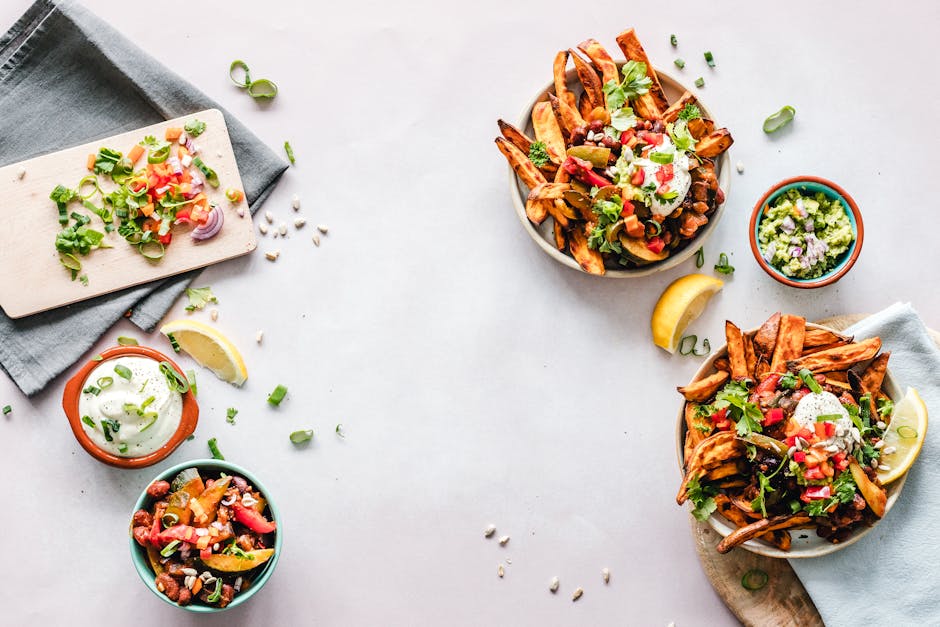Methods of Intermittent Fasting
Among the best methods for the fastest weight loss with intermittent fasting, let's explore the different options you can consider.
The 16/8 Method
The 16/8 method is as simple as skipping breakfast. Your eating window is strictly limited to an 8-hour period, like from noon to 8 p.m., while you fast for the remaining 16 hours. This method is flexible and fits various schedules. Studies indicate this time-restricted eating may help with weight reduction and improve glucose metabolism.1
The 5:2 Method
For the 5:2 diet, five days of the week you eat normally. The remaining two days, you drastically reduce caloric intake to about 500–600 calories. No rules dictate which days to pick for fasting. This method can be particularly helpful for those wanting a bit more structure without the intensity of daily fasting.
Eat Stop Eat
Brad Pilon's Eat Stop Eat involves fasting for a full 24 hours once or twice a week. You don't eat from dinner one day until dinner the next. This method has shown that it might boost fat burning by making the body use fat instead of glucose for energy.2 It's crucial though, post-fast, not to go overboard and binge—it's about eating wisely.
Alternate-Day Fasting
Alternate-day fasting means exactly as it sounds. You fast every other day. Some versions allow around 500 calories on fasting days; others nix the food entirely. Studies reveal this can lead to consuming significantly fewer calories and boost weight loss.3 This type of fasting is well-suited for those who might handle more challenging fasting schedules and want quicker results.
The Warrior Diet
The Warrior Diet is a bit intense—20 hours of undereating followed by a 4-hour eating window off a blueprint of ancient warriors. During the long fasting period, you can nibble on small amounts of dairy, eggs, or raw vegetables. Once the 20 hours are up, it's time for a hearty 4-hour feast, focusing mostly on unprocessed and healthy foods. The point is to push your body to burn fat.
Each intermittent fasting method offers a unique path to weight loss. From the 16/8 method's daily routine to the Warrior Diet's intense but rewarding structure, consider what aligns best with your daily life and eating habits. Transitioning smoothly between these strategies ensures sustainable weight loss results over time.
Benefits and Risks
While intermittent fasting (IF) is gaining traction for its potential benefits, it's essential to be aware of both its advantages and potential downsides to make an informed decision.
On the positive side, intermittent fasting is not just a trend without merit. Scientific evidence backs several health benefits linked to this eating pattern:
- Weight Loss: Many find IF effective for shedding pounds, thanks to reduced calorie intake and hormonal shifts that facilitate fat burning. When you fast, insulin levels drop while human growth hormone (HGH) levels increase, promoting the breakdown of body fat and its use as energy.4
- Cognitive Function: Some studies suggest intermittent fasting might enhance brain function. IF ramps up the production of brain-derived neurotrophic factor (BDNF), a protein that supports neuron health and cognitive improvement.5
- Heart Health: By lowering risk factors associated with cardiovascular disease—such as blood pressure, cholesterol levels, triglycerides, and inflammatory markers—IF could contribute to a healthier heart.6
- Metabolic Health: Intermittent fasting can increase insulin sensitivity and lower blood sugar levels, which is particularly beneficial for individuals with prediabetes or type 2 diabetes. Various fasting strategies have shown promise in helping regulate glucose metabolism, ensuring more stable energy levels.7
- Autophagy: The process of autophagy, wherein the body cleans out damaged cells to regenerate newer, healthier ones, is triggered by fasting. This cellular renewal process is vital for longevity and disease prevention.8
Yet, while IF boasts these benefits, it's not without potential risks and side effects, and it's crucial to acknowledge these:
- Nutrient Deficiency: Limiting food intake to narrow windows can risk inadequate nutrient consumption. It's critical to ensure that when you do eat, your meals are balanced and nutrient-dense.
- Hormonal Imbalance in Women: For some women, intermittent fasting may lead to hormonal disruptions, including changes in menstrual cycles. Women should heed their body's signals and consult healthcare providers before starting an IF regimen.
- Eating Disorders: Those with a history of eating disorders or disordered eating behaviors should approach IF cautiously. The structured eating windows and fasting periods might trigger unhealthy eating patterns or obsessive behaviors around food.
- Blood Sugar Fluctuations: Individuals with diabetes or hypoglycemia should be careful, as fasting can cause blood sugar levels to drop dangerously low. Close monitoring and professional guidance are needed to ensure safety.
- Muscle Loss: Without proper nutrient intake, particularly adequate protein, there's a risk of losing muscle mass along with fat. Combining IF with strength training and sufficient protein consumption can help mitigate this risk.
Ultimately, like any health and fitness strategy, intermittent fasting isn't a one-size-fits-all solution. Its success largely depends on personal preferences, individual health conditions, and lifestyle compatibility. Embrace the method that resonates with you, and always prioritize your overall well-being. Before starting any new dietary regimen, especially one involving significant changes like intermittent fasting, consulting a healthcare professional ensures you make the move that's best for your health.
Optimization and Effective Practices
Maximizing the benefits of intermittent fasting requires a holistic approach that integrates nutrition, exercise, and psychological strategies to ensure its sustainability and effectiveness. Let's examine how you can optimize your intermittent fasting practice for the best results.
To start, focusing on nutrient-dense foods during your eating periods is paramount. When you break your fast, aim for meals rich in vegetables, lean proteins, healthy fats, and whole grains. This ensures that your body gets the necessary vitamins, minerals, and other nutrients it needs to function optimally.
Hydration is another crucial aspect of intermittent fasting. During your fasting window, make sure to drink plenty of water. Not only does staying hydrated support overall health, but it can also help manage hunger pangs. Herbal teas and black coffee can be beneficial too, offering a zero-calorie way to stay hydrated and, in the case of coffee, possibly suppressing appetite.9
Speaking of physical activity, incorporating exercise into your intermittent fasting routine can amplify your weight loss and health benefits. Strength training, in particular, helps maintain muscle mass, which can sometimes be a concern with intermittent fasting.10 Timing your workouts can also make a difference. Some people find that exercising at the end of their fasting period adds an extra metabolic boost and leverages the body's fat-burning state. However, it's crucial to listen to your body and adjust as needed.
Psychological and practical aspects are just as vital for making intermittent fasting a sustainable part of your healthy lifestyle. Start by keeping a positive mindset and viewing intermittent fasting as a flexible tool rather than a rigid protocol. This mindset shift can help mitigate feelings of deprivation and make the experience more enjoyable. Additionally, planning your meals ahead of time can alleviate the stress of figuring out what to eat, ensuring you make nutritious choices rather than resorting to convenience foods.
Maintaining consistency is key, but so is adaptability. Life can throw curveballs, be it work demands, social events, or family obligations. Developing a forgiving attitude towards yourself and your intermittent fasting schedule can greatly reduce stress. If you need to adjust your eating window from time to time or if you occasionally eat outside your designated hours, that's perfectly okay. The goal is long-term adherence and overall wellness, not perfection.
Building a supportive environment can also make a big difference. Share your goals with family and friends, or join online communities where you can exchange tips and encouragement. Having a network of support can provide motivation on days when sticking to your fasting schedule feels challenging.
Finally, make sure to monitor your progress and listen to your body. Track how you feel, your energy levels, and any changes in your weight or measurements. Keeping a journal can offer insights into what works best for you and help identify any adjustments needed. Remember that intermittent fasting is a personal journey, and what works perfectly for one person may need tweaking for another.
By integrating these optimization tips and effective practices, you can harness the full potential of intermittent fasting, making it a practical and sustainable part of your health journey. Stay committed, remain adaptive, and prioritize your overall well-being every step of the way.

Writio: Your AI content writer for website publishers and blogs. This article was crafted by Writio.
- Tinsley GM, La Bounty PM. Effects of intermittent fasting on body composition and clinical health markers in humans. Nutr Rev. 2015;73(10):661-674.
- Pilon B. Eat Stop Eat. Strength Works; 2007.
- Varady KA, Bhutani S, Church EC, Klempel MC. Short-term modified alternate-day fasting: a novel dietary strategy for weight loss and cardioprotection in obese adults. Am J Clin Nutr. 2009;90(5):1138-1143.
- Mattson MP, Longo VD, Harvie M. Impact of intermittent fasting on health and disease processes. Ageing Res Rev. 2017;39:46-58.
- Mattson MP. Challenging oneself intermittently to improve health. Dose Response. 2014;12(4):600-618.
- Santos HO, Macedo RCO. Impact of intermittent fasting on the lipid profile: Assessment associated with diet and weight loss. Clin Nutr ESPEN. 2018;24:14-21.
- Halberg N, Henriksen M, Söderhamn N, et al. Effect of intermittent fasting and refeeding on insulin action in healthy men. J Appl Physiol. 2005;99(6):2128-2136.
- Bagherniya M, Butler AE, Barreto GE, Sahebkar A. The effect of fasting or calorie restriction on autophagy induction: A review of the literature. Ageing Res Rev. 2018;47:183-197.
- Maughan RJ, Griffin J. Caffeine ingestion and fluid balance: a review. J Hum Nutr Diet. 2003;16(6):411-420.
- Moro T, Tinsley G, Bianco A, et al. Effects of eight weeks of time-restricted feeding (16/8) on basal metabolism, maximal strength, body composition, inflammation, and cardiovascular risk factors in resistance-trained males. J Transl Med. 2016;14(1):290.
Thank you for reading this post, don't forget to subscribe to our free newsletter
!
